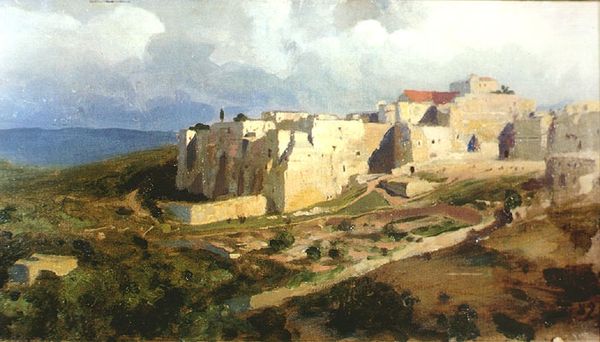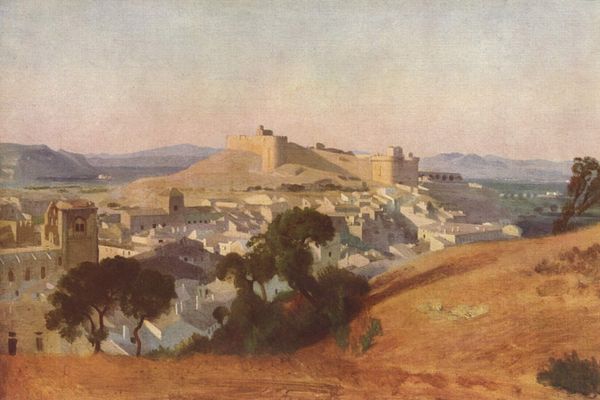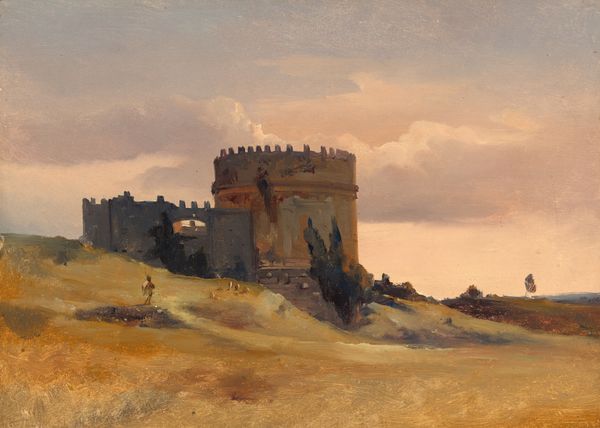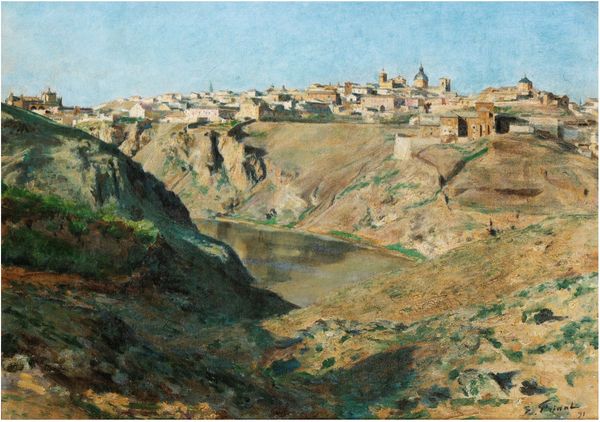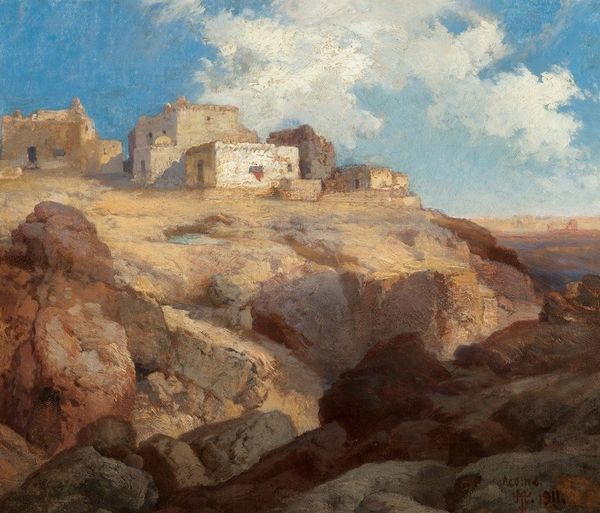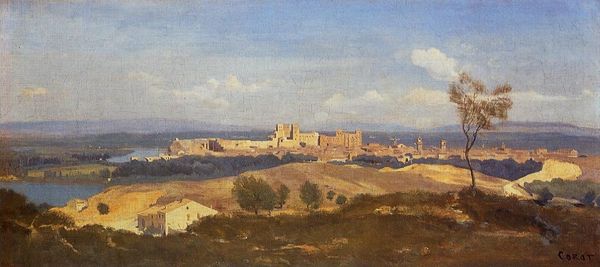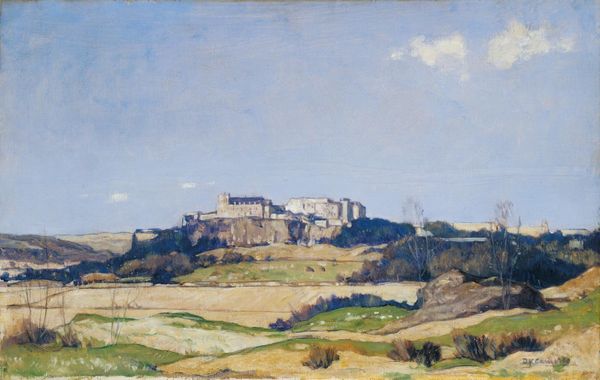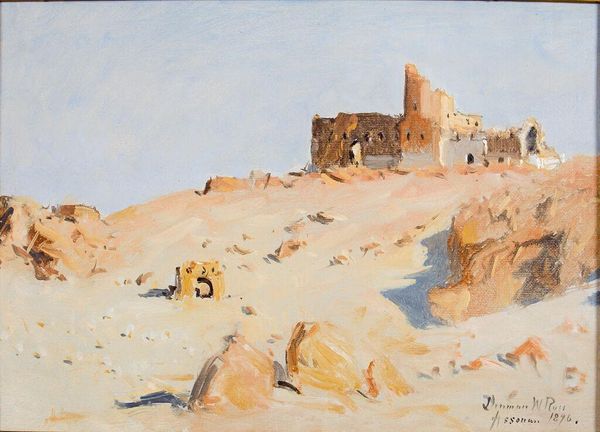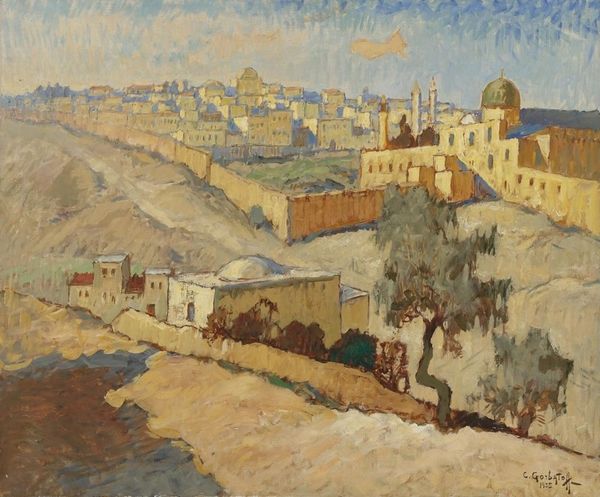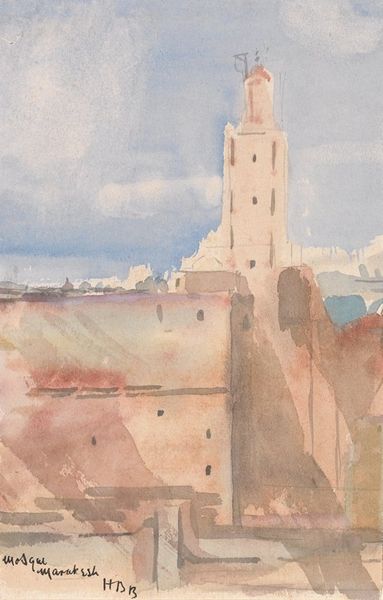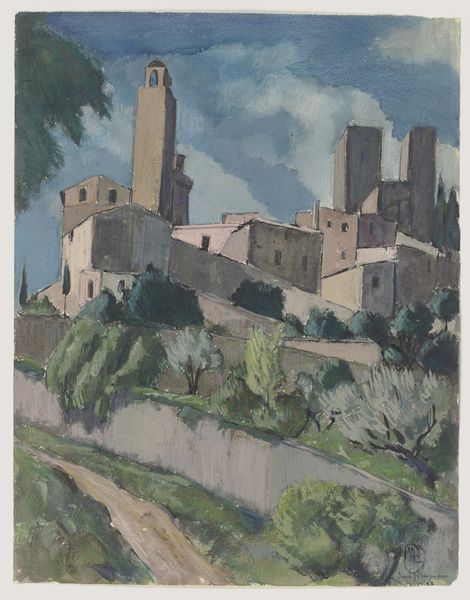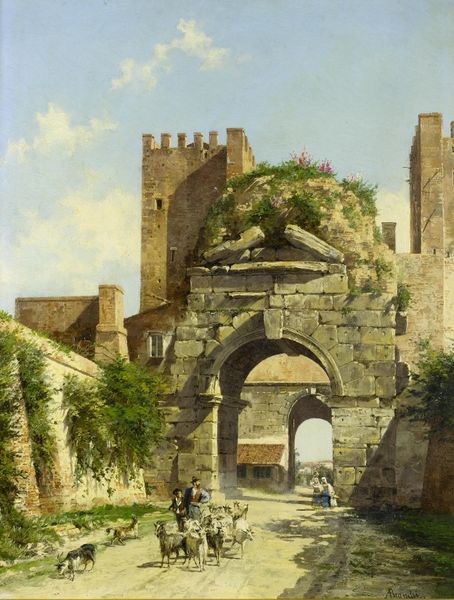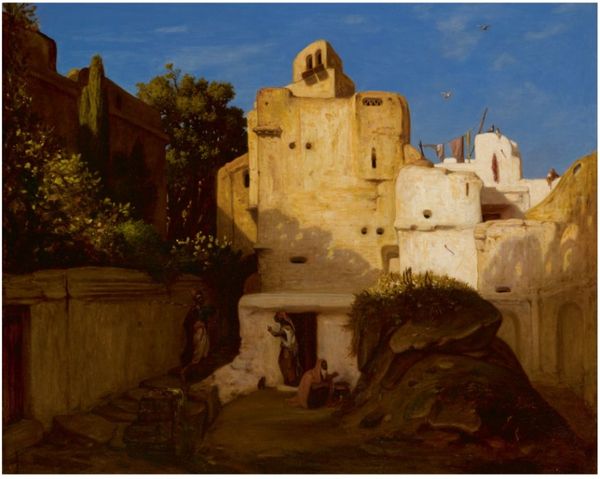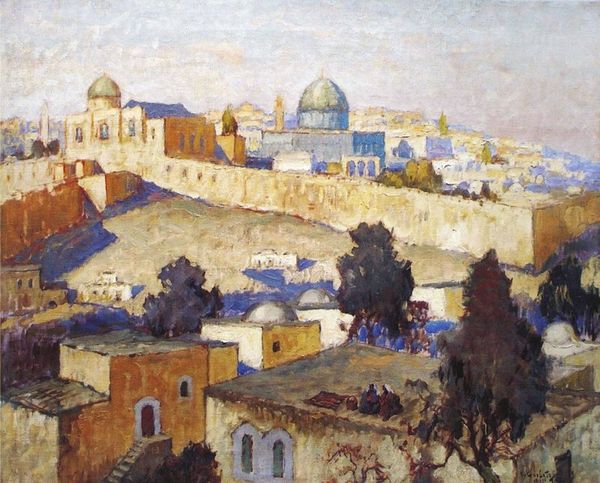
Copyright: Public domain
Curator: Ludovic Alleaume's "Jerusalem," created around 1910 using tempera and oil paints, offers a sun-drenched view of this historical city. What’s your initial reaction to this work? Editor: Hmm, it's interesting. There's this strong feeling of…watching. Like I'm a curious but respectful outsider looking in on a place with layers and layers of untold stories embedded in its walls and soil. The muted tones create a kind of wistful distance. Curator: That's a perceptive reading. Orientalism was at its peak, and the Western gaze was quite powerful. This painting comes to us freighted with the implications of that moment, which dictated certain ways of seeing the East and ancient cities like Jerusalem. Editor: So, Alleaume is both artist and a product of his era, documenting what he saw while also inevitably shaping it, and perhaps exoticizing it. Do you see the plein-air influences in the technique? Curator: Absolutely. Notice how the light plays across the stonework. It reflects the Impressionist movement's commitment to capturing fleeting moments and direct observation in nature, but that gets entangled with this romantic impulse of his moment. Editor: It feels very "postcard," though I don't mean that dismissively. More like it’s a record meant to last—that juxtaposition of capturing an ephemeral light while painting something eternal. It definitely makes me feel how temporary my viewpoint and perception are, which is kind of beautiful. Curator: And what is also compelling is thinking about the purpose of such imagery during this era. Landscape painting, especially depictions of culturally and religiously significant sites, were frequently utilized as visual aids, intended to bolster European claims and interests in the Middle East. Editor: Makes me consider the stories we *aren’t* being told here. What kind of statement could an artist make at the time period, and how can we interpret artwork now by keeping historical forces in mind? Curator: Precisely. Thinking about art within its context, how it reflects or perhaps tries to resist larger narratives of power, gives it even more nuance. It enriches the act of looking and expands its meaning. Editor: Right, almost makes the city seem alive as well with its story. Well, thanks for making my perspective just a little less temporary!
Comments
No comments
Be the first to comment and join the conversation on the ultimate creative platform.
